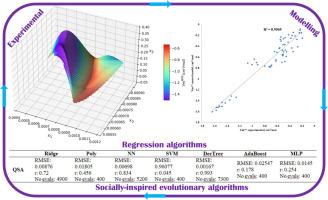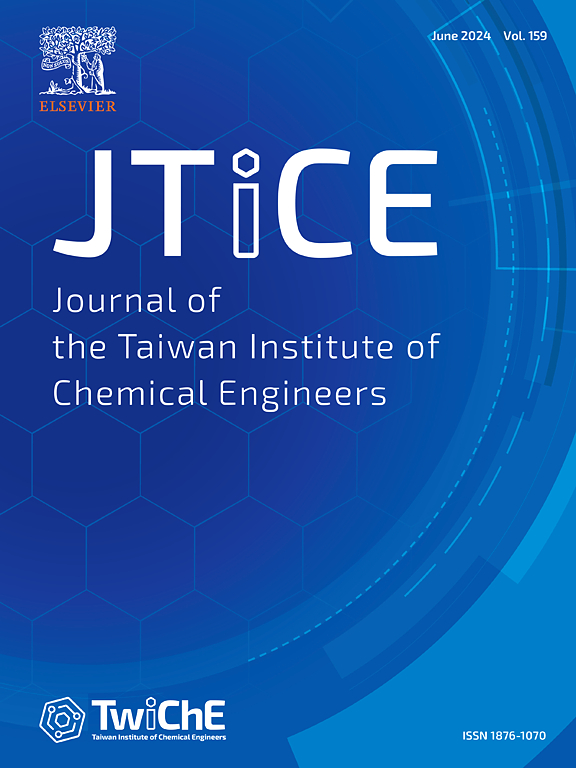二元、三元和四元混合物的热力学性质:乙酸正丁酯-正己醇-n,n-二甲基乙酰胺-水。使用回归算法建模和使用社会启发进化算法优化
IF 6.3
3区 工程技术
Q1 ENGINEERING, CHEMICAL
Journal of the Taiwan Institute of Chemical Engineers
Pub Date : 2024-10-09
DOI:10.1016/j.jtice.2024.105796
引用次数: 0
摘要
背景化工厂的设计需要了解相关流体的热力学性质。方法在研究中,我们在常压和以下温度下对含有醋酸正丁酯、正己醇、正,正二甲基乙酰胺和水的二元、三元和四元体系的折射率和密度进行了实验测量:利用人工神经网络和通过回归算法获得的其他模型,并通过不同的社会启发进化算法进行优化,确定过剩摩尔体积,过剩摩尔体积与摩尔分数、归一化温度和折射率相关。本方法是基于文献中类似研究较少这一事实;此外,所获得的模型可以通过预测对实验数据进行补充/完善。本文章由计算机程序翻译,如有差异,请以英文原文为准。

Thermodynamic properties of binary, ternary and quaternary mixtures: N‑butyl acetate- n-hexanol - n,n-dimethylacetamide-water. Modeling using regression algorithms and optimization using socially-inspired evolutionary algorithms
Background
The design of chemical plants requires knowledge of the thermodynamic properties of the fluids involved.
Methods
In our research, we performed experimental measurements of the refractive index and density of binary, ternary and quaternary systems containing n‑butyl acetate, n-hexanol, n,n-dimethylacetamide and water, at atmospheric pressure and the following temperatures: 293.15 K, 303.15 K, 313.15 K and 323.15 K. They were used to determine the excess molar volume, which was correlated with mole fractions, normalized temperature and refractive index, using artificial neural networks and other models obtained with regression algorithms, optimized with different socially-inspired evolutionary algorithms.
Significant Findings
The best results were achieved with decision tree regression and the queuing search optimization algorithm. The present approach is based on the fact that there are few similar studies in the literature; in addition, the models obtained can complement/supplement the experimental data through predictions.
求助全文
通过发布文献求助,成功后即可免费获取论文全文。
去求助
来源期刊
CiteScore
9.10
自引率
14.00%
发文量
362
审稿时长
35 days
期刊介绍:
Journal of the Taiwan Institute of Chemical Engineers (formerly known as Journal of the Chinese Institute of Chemical Engineers) publishes original works, from fundamental principles to practical applications, in the broad field of chemical engineering with special focus on three aspects: Chemical and Biomolecular Science and Technology, Energy and Environmental Science and Technology, and Materials Science and Technology. Authors should choose for their manuscript an appropriate aspect section and a few related classifications when submitting to the journal online.

 求助内容:
求助内容: 应助结果提醒方式:
应助结果提醒方式:


